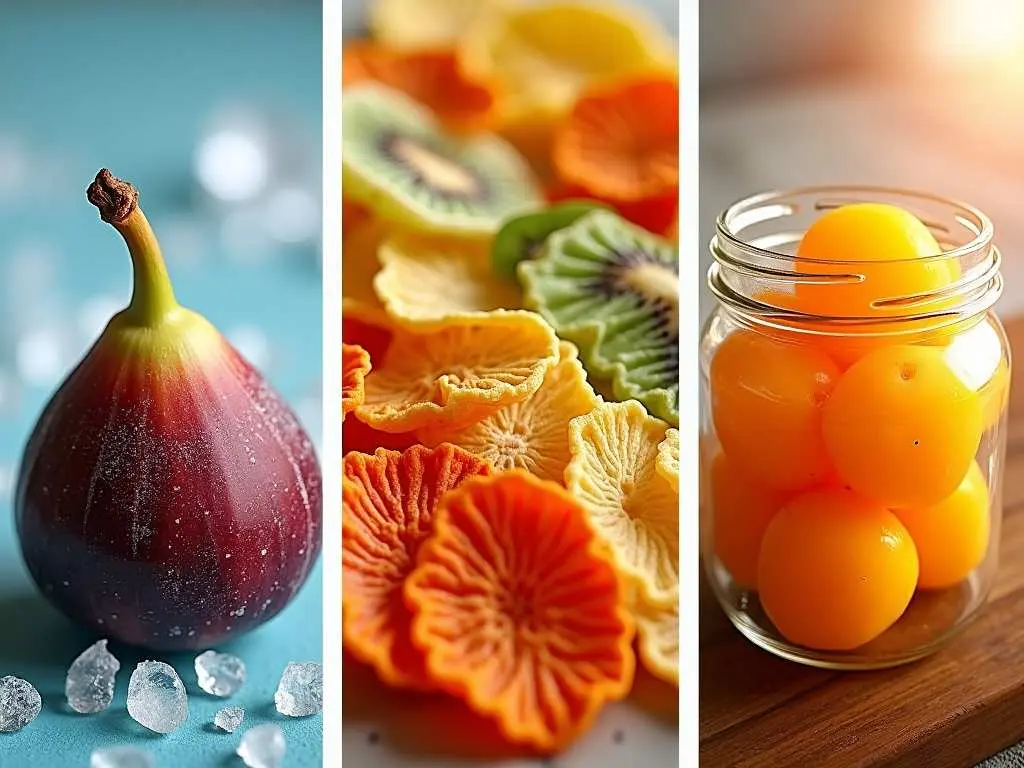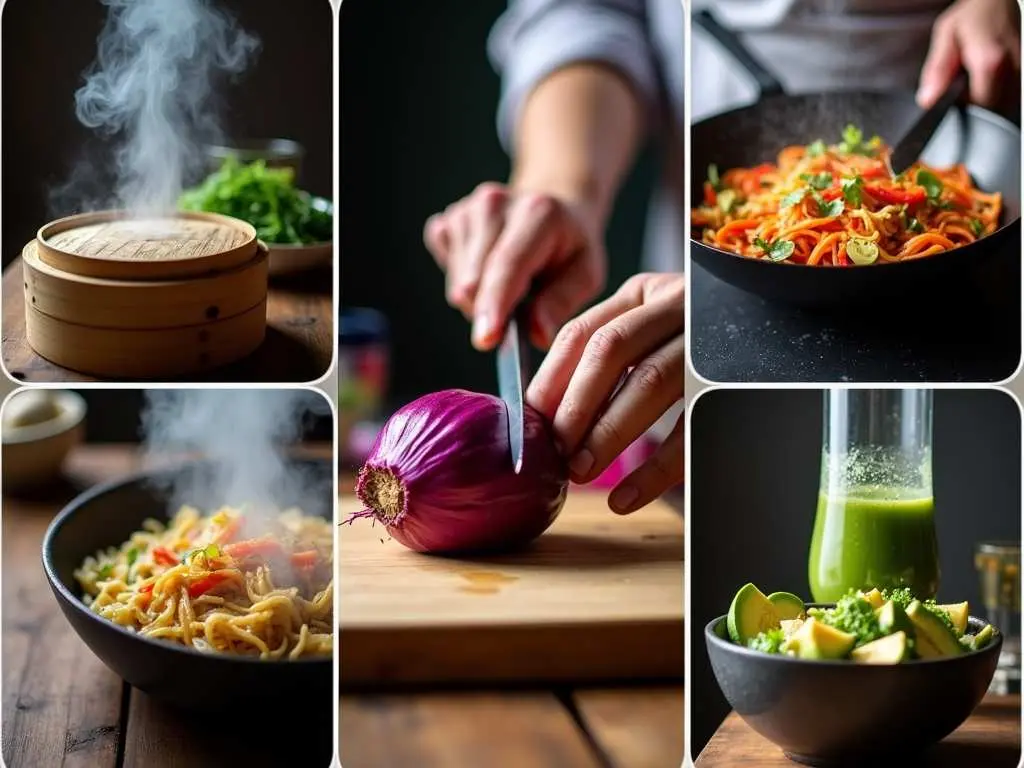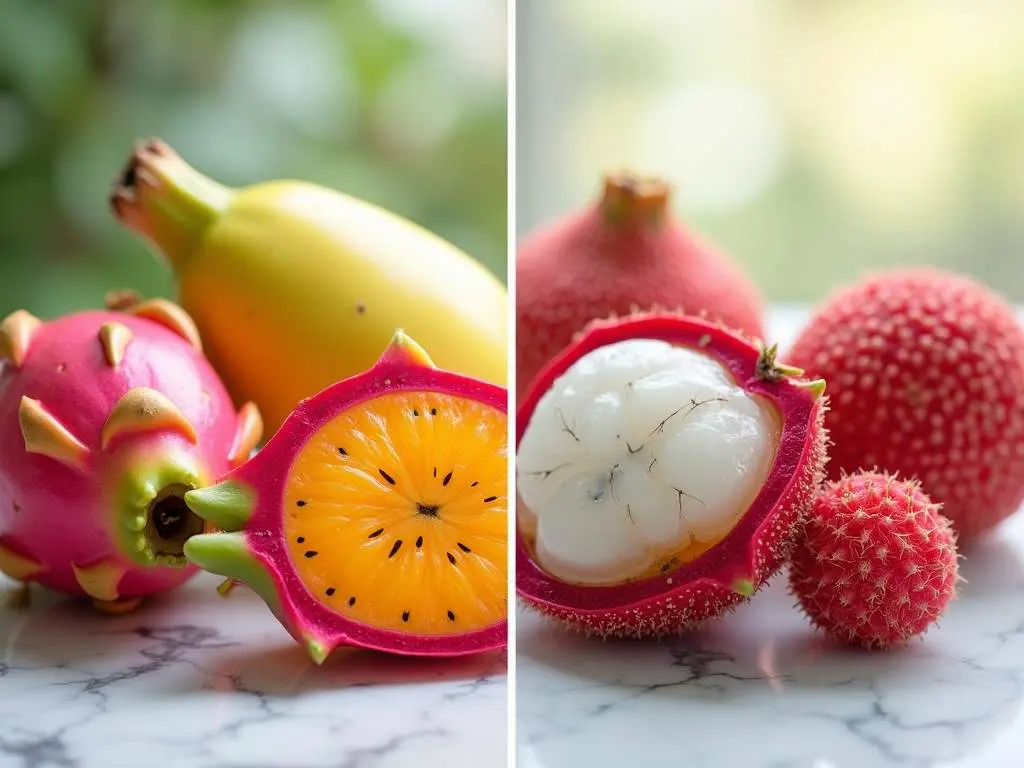As a nutritional biochemist specializing in food science, I’ve extensively researched the intricate relationship between ripeness and nutrient retention. My work has revealed fascinating insights into how peak ripeness can significantly impact the nutritional value of our food. This article explores the science behind nutrient preservation and offers practical strategies for maximizing the health benefits of your produce.
The Science of Peak Ripeness
Peak ripeness is more than just a culinary preference; it’s a critical factor in the nutritional quality of fruits and vegetables. When produce reaches its optimal ripeness, it typically contains the highest concentration of vitamins, minerals, and beneficial phytochemicals. This stage represents the pinnacle of the plant’s development, where it has accumulated the maximum amount of nutrients to support seed dispersal and reproduction.
Nutrient Changes During Ripening
As fruits and vegetables ripen, they undergo complex biochemical changes that affect their nutrient profile:
- Increase in antioxidants: Many fruits show a significant increase in antioxidant content as they ripen. For example, the anthocyanin content in blackberries can increase more than fourfold as they transition from underripe to ripe.
- Vitamin C fluctuations: The vitamin C content can vary depending on the type of produce. In bell peppers, tomatoes, and pineapples, vitamin C levels increase during ripening. However, in oranges, grapes, and lemons, vitamin C content peaks when the fruit is half-ripe.
- Conversion of starches to sugars: As fruits ripen, their starch content decreases while sugar content increases. This process affects both taste and nutritional value. For instance, unripe bananas have higher resistant starch content, which changes to simple sugars as they ripen.
Optimal Harvesting for Nutrient Preservation
The timing of harvest plays a crucial role in preserving nutrients. Fruits and vegetables continue to ripen after being picked, but the rate of nutrient accumulation slows significantly. Therefore, harvesting at the right moment is essential for maximizing nutrient content.
Best Practices for Harvesting
- Morning harvest: Pick fruits and vegetables early in the morning when their water content is highest, helping to maintain freshness and nutrient levels.
- Gentle handling: Use proper techniques to avoid bruising or damaging the produce, which can lead to faster nutrient degradation.
- Immediate cooling: Rapidly cool harvested produce to slow down enzymatic processes that can break down nutrients.
Preservation Techniques for Peak-Ripe Produce

Once produce has reached peak ripeness, the challenge becomes preserving those nutrients for as long as possible. Here are some effective preservation techniques:
1. Freezing
Freezing is one of the best methods for preserving nutrients in peak-ripe produce. It halts enzymatic processes that can degrade nutrients and maintains the structural integrity of the food.
Tips for freezing:
- Blanch vegetables briefly before freezing to inactivate enzymes.
- Use airtight, moisture-proof containers to prevent freezer burn.
- Freeze fruits and vegetables as quickly as possible after harvesting.
2. Dehydration
Dehydration can effectively preserve nutrients while significantly extending shelf life. However, it’s crucial to use the right techniques to minimize nutrient loss.
Tips for dehydration:
- Use low-temperature dehydration (under 43°C) to preserve vitamin content, especially for fruits and vegetables.
- Consider pre-treating fruits with lemon juice or ascorbic acid to prevent browning and preserve nutrients.
3. Canning and Bottling
While heat processing can cause some nutrient loss, proper canning techniques can still preserve a significant amount of nutrients for long-term storage.
Tips for canning:
- Use the appropriate processing method based on the acidity of the food. High-acid foods (pH < 4.6) can be processed using the boiling water bath method, while low-acid foods require pressure canning.
- Minimize processing time to reduce nutrient loss.
Advanced Preservation Technologies
Recent advancements in food preservation technology offer promising methods for maintaining the nutritional quality of peak-ripe produce:
1. High-Pressure Processing (HPP)
HPP is a non-thermal preservation method that can inactivate microorganisms while maintaining the nutritional and sensory properties of foods7.
Benefits of HPP:
- Preserves vitamins, minerals, and antioxidants better than traditional thermal processing.
- Maintains the fresh taste and texture of produce.
2. Pulsed Electric Field (PEF) Treatment
PEF technology uses short bursts of electricity to inactivate microorganisms and enzymes, potentially preserving more nutrients than traditional thermal processing.
Advantages of PEF:
- Minimal heat generation, reducing thermal degradation of nutrients.
- Can improve extraction of beneficial compounds from plant cells.
3. Edible Coatings
Edible coatings made from natural materials like chitosan or plant-based waxes can help preserve nutrients by creating a protective barrier around the produce.
Benefits of edible coatings:
- Reduces moisture loss and gas exchange, slowing down ripening and nutrient degradation.
- Can be infused with additional nutrients or antimicrobial compounds for enhanced preservation.
Storing Peak-Ripe Produce
Proper storage is crucial for maintaining the nutrient content of peak-ripe produce. Here are some general guidelines:
- Temperature control: Store most fruits and vegetables in the refrigerator at 4°C or below to slow down enzymatic processes and microbial growth.
- Humidity management: Use the crisper drawer in your refrigerator to maintain proper humidity levels for different types of produce.
- Ethylene management: Separate ethylene-producing fruits (like apples and bananas) from ethylene-sensitive produce to prevent accelerated ripening and nutrient loss.
- Light protection: Store light-sensitive produce, such as potatoes, in dark places to prevent the formation of solanine, which can be toxic.
Maximizing Nutrient Retention During Preparation

Even with perfectly preserved peak-ripe produce, nutrient loss can occur during preparation. Here are some tips to minimize nutrient loss:
- Minimize cutting: Cut produce just before use to reduce exposure to air and light, which can degrade nutrients.
- Steam or microwave: These cooking methods preserve more water-soluble vitamins than boiling.
- Use the right amount of water: When boiling is necessary, use minimal water and cook for the shortest time possible.
- Utilize cooking liquids: Incorporate nutrient-rich cooking water into soups or sauces.
- Combine with healthy fats: Some nutrients, like fat-soluble vitamins, are better absorbed when consumed with a small amount of healthy fat.
People Also Ask
Q: Does freezing fruits and vegetables affect their nutrient content?
A: Freezing is one of the best methods for preserving nutrients in fruits and vegetables. While there may be slight losses during the blanching process, frozen produce often retains more nutrients than fresh produce that has been stored for several days.
Q: Are canned fruits and vegetables as nutritious as fresh ones?
A: Canned fruits and vegetables can be nutritious, but some nutrients, particularly water-soluble vitamins like vitamin C, may be reduced during the canning process. However, canned produce can have higher levels of certain nutrients, like lycopene in tomatoes, due to the processing.
Q: How does ripeness affect the sugar content of fruits?
A: As fruits ripen, their starch content typically decreases while their sugar content increases. This is why ripe fruits taste sweeter. For example, unripe bananas have higher resistant starch content, which changes to simple sugars as they ripen.
Conclusion
Understanding the science of peak ripeness and nutrient preservation empowers us to make informed choices about how we harvest, store, and prepare our food. By implementing these evidence-based strategies, we can maximize the nutritional value of our produce, contributing to better health and more flavorful meals. Remember, the journey from farm to table is a critical one for nutrient preservation, and every step matters.
References
- Better Health Channel. (n.d.). Food processing and nutrition. Retrieved from https://www.betterhealth.vic.gov.au/health/healthyliving/food-processing-and-nutrition
- Vitagora. (2020). Preserving natural nutrients in your products: what processing methods to choose? Retrieved from https://www.vitagora.com/en/blog/2020/nutrition-processing-preservation/
- University of Kentucky College of Agriculture, Food and Environment. (n.d.). Preserving Nutrients in Food. Retrieved from https://fcs-hes.ca.uky.edu/sites/fcs-hes.ca.uky.edu/files/fn-ssb.006.pdf
- Barba, F. J., Terefe, N. S., Buckow, R., Knorr, D., & Orlien, V. (2015). New opportunities and perspectives of high pressure treatment to improve health and safety attributes of foods. A review. Food Research International, 77, 725-742.
- Well+Good. (n.d.). Ripe vs. Unripe Fruit and Vegetable Health Benefits. Retrieved from https://www.wellandgood.com/ripe-vs-unripe-fruit-nutrition/
- Growing Home. (n.d.). Beginner’s Guide to Food Preserving + Storage. Retrieved from https://growinghome.com.au/dirt-to-dinner-guides/food-preserving-storage/


